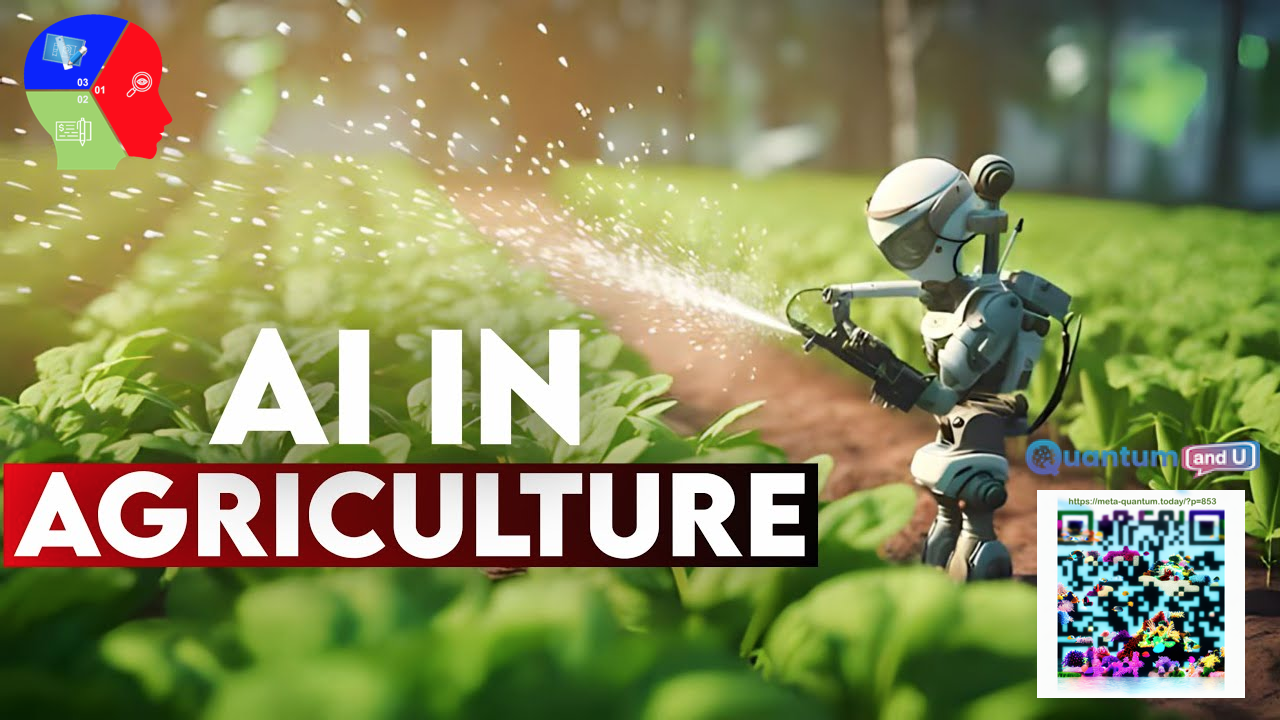
Introduction:
The YouTube review “AI Farming: Unleashing the Future of Agriculture” addresses the significant challenges faced by modern agriculture, such as crop diseases, varying weather patterns, and feeding a growing global population. It highlights how artificial intelligence (AI) could revolutionize farming by devising creative solutions, minimizing risks, and ensuring improved agricultural outcomes. The review touches on numerous applications of AI in agriculture, from strategic decision-making through market analysis to risk management for crop health. AI’s role in seed breeding for improved crop yield and resilience, as well as dynamic soil health monitoring, is also discussed. The speaker also discusses how AI can enhance crop protection with advanced pest detection, optimize resource utilization, and automate labor-intensive farming tasks. The review’s objective is to thoroughly examine how AI can transform farming practices, leading to a sustainable, productive, and climate-resilient agricultural sector. The review concludes that AI’s application in agriculture holds the promise of a future where food security is a reality. In sum, “AI Farming: Unleashing the Future of Agriculture” presents a compelling vision of a future of agriculture marked by technological innovation, sustainability, and food security.
Related Sections:
- AI Revolutionizing Agriculture:
The video highlights the inherent risks faced by farmers due to crop diseases, weather fluctuations, and national emergencies. With the global population growing and urbanization on the rise, future farming techniques alone may not be sufficient to meet the increasing demand. The integration of AI with existing technologies offers transformative potential in agriculture. - Embracing AI in Agriculture :
- Challenges and Opportunities:
To fully leverage the potential of AI in agriculture, farmers need to understand its application in traditional farming. Agritech companies play a crucial role in bridging the gap by explaining the benefits of AI and providing guidance for effective implementation. Overcoming misconceptions and hesitations is essential for successful AI adoption in the agricultural sector. - Unlocking the Potential of AI in Agriculture:
When combined with existing technologies, AI can significantly improve various agricultural operations. Farmers can automate tasks, process large volumes of data, and simplify complex processes. Key areas where AI can address critical aspects of farming include market analysis, risk management, seed breeding, soil monitoring, crop protection, resource optimization, and automation. - Addressing Farming Challenges with AI:
AI provides farmers with data-driven decision-making capabilities, enabling them to overcome obstacles and make wise choices throughout the crop cultivation process. It facilitates better decision-making by analyzing market demand, optimizing sowing and harvesting times, and improving resource allocation, leading to increased yields and cost savings. - Addressing Labor Shortages:
AI-powered technologies, such as autonomous tractors, intelligent irrigation systems, spraying automation, and harvesting robots, address the issue of labor shortages in the agricultural industry. These technologies enhance efficiency, accuracy, and productivity, compensating for the labor deficit. - Challenges in Adopting AI for Farmers:
Despite the advantages of AI in sustainable farming, several challenges hinder its implementation. Lengthy adoption processes, lack of experience with emerging technologies in developing nations, and concerns about privacy and security require careful consideration and proactive support from technology providers.
- Challenges and Opportunities:
- Integration of AI with Other Technologies:
AI’s effectiveness in agriculture depends on its integration with other technologies, such as big data, IoT sensors, and automation. These technologies complement AI, enhancing its capabilities and improving decision-making processes.
Conclusion:
In conclusion, AI presents a promising future for agriculture, offering solutions to cope with the increasing demands of a growing global population and limited resources. Through AI-powered technologies, farmers can optimize crop selection, manage risks, improve seed breeding, monitor soil health, protect crops, and efficiently manage resources. Overcoming challenges related to AI adoption, such as education, affordability, data security, and support, requires collaboration between farmers, technology providers, and policymakers. By embracing AI and its transformative powers, farmers can boost productivity, overcome obstacles, and contribute to a more sustainable and food-secure future.
Key Takeaway Points:
- AI offers solutions to address challenges in agriculture, including crop diseases, weather variability, and increasing global demand.
- Integrating AI with existing technologies can significantly improve agricultural operations, optimizing resources and automating tasks.
- AI’s applications in agriculture include market analysis, risk management, seed breeding, soil monitoring, crop protection, and automation.
- Challenges to AI adoption in farming include lengthy processes, lack of experience in some regions, and privacy and security concerns.
- Collaboration between farmers, technology providers, and policymakers is essential to harness the potential of AI in agriculture for a sustainable


